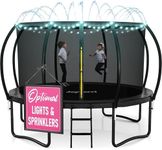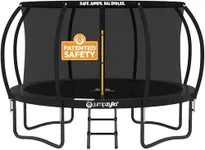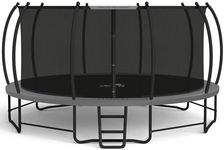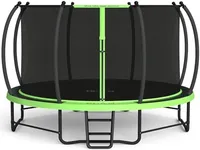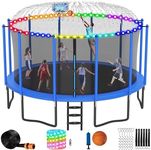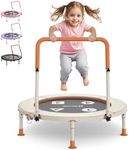Best Trampolines
From leading brands and best sellers available on the web.
Springfree
Springfree 13 Ft Square Outdoor Backyard Trampoline w/ Safety Flexi Net Enclosure & Soft Edge Mat - Heavy-Duty Jumping Play Equipment and Accessories for Family

Zupapa
17%OFF
Zupapa 1500LBS Weight Capacity Rectangle Trampoline 10x17FT 9X15FT 8X14FT Outdoor Square Gymnastics Trampolines with Basketball Hoops for Kids Adults Long Large Big Rectangular Tumbling Trampolin
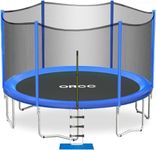
ORCC
ORCC 1200LBS Weight Capacity Trampoline 16 15 14 12 10 8FT Without Basketball Hoop Water Sprinkler Spiral Ground Stakes Outdoor Yard Trampolines for Kids Adults
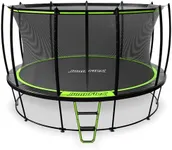
Jumpflex
JumpFlex Large Round Recreational Backyard Trampoline & Net, 15 ft, Green/Black
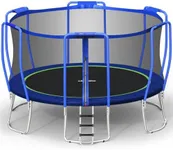
Zupapa
Zupapa 1800LBS Capacity No-Gap Design 16 15 14 12 10FT Trampoline with Safety Enclosure Net and Non-Slip Ladder 10-Year Quality Assurance Perfect for Kids Family Outdoor Backyard Fun
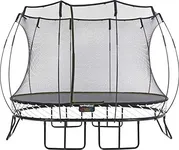
Springfree
7%OFF
Springfree Oval Outdoor Backyard Trampoline w/ Safety Flexi Net Enclosure & Soft Edge Mat - Springless Recreational and Fitness Trampolines for Kids, Adult and Family Jumping
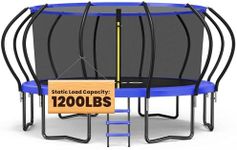
ORCC
7%OFF
ORCC Kids Trampoline, 1200LBS Weight Capacity Outdoor Trampoline 16 15 14 12 10 8FT Yard Trampolines for Kids Adults

Springfree
Springfree Large Square Backyard Trampoline with Enclosure & Hidden Frame, 11'

Acon
ACON Air 16 Sport HD Trampoline Set 10x17ft with Enclosure | Comprehensive Kit Includes Rectangular Trampoline, Safety Net, Pad, and Ladder | Pro-Grade Safety and Performance
Our technology thoroughly searches through the online shopping world, reviewing hundreds of sites. We then process and analyze this information, updating in real-time to bring you the latest top-rated products. This way, you always get the best and most current options available.

Most Popular Categories Right Now
